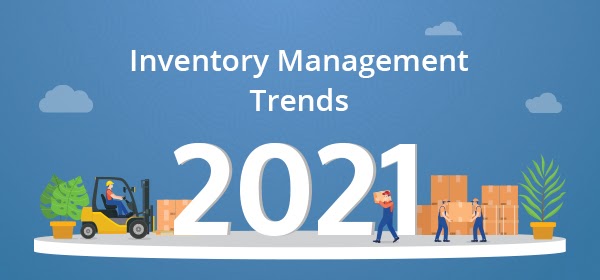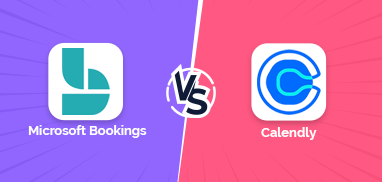Inventory management is a common term you may have heard when it comes to retail stores. It is the process by which a company acquires, stores, and sells products of different types. There may be different goods like raw materials, work-in-progress goods, finished items, maintenance, repair, and operation (MRO) items.
While inventory management methods may differ slightly from one company to another, staying on top of the latest trends is important. The more you keep yourself in line with the latest trends, the more efficient your inventory management becomes.
So, if you are looking to update your inventory management, we’ve got this post for you. It will walk you through the latest inventory management trends and how a plugin can help you streamline your inventory management.
Top Inventory Management Trends
1. Distributed Inventory Management
Companies today are distributing their inventory across different warehouses. Instead of having huge warehouses in only a few locations, companies are moving to smaller warehouses in more locations.
Distributed inventory management helps manage delivery operations and make them faster. When a customer in a region orders something, the company can ship the product from the warehouse nearest to the customer’s location. This not only helps reduce transportation costs but also reduces delivery periods.
2. Personalization
Understanding your customers’ purchasing habits, preferences, expectations, and needs on a deeper level helps you personalize your inventory better.
When you stock relevant products and suggest them to your customers, it engages them better. This is what all the companies are doing now. They are adopting the trend of personalization to suggest products to customers based on their preferences, purchase history, etc.
The sources of personalization can include anything like demographic data of individuals, behavioral data like content customers view on the website, whether they are first-timers or repeat buyers, and more. You can also note the peak seasons when demand for particular products soars to get ready in advance.
3. Automation
When a company defines workflow rules to trigger different actions on different events without manual intervention, we refer to it as automation. Automating redundant tasks can help you give more time to your employees to focus on more important projects and tasks. This can help you promote your brand and enhance product quality as well. And this is what companies are doing today. They are switching to automated solutions for different inventory operations to reduce the burden on employees.
For instance, in a retail store, if you can automate inventory count, a customer places an order across any sales channel, and it goes into processing. This will save you from the risk of double-selling or other issues. The other instances of automation can include automated SKU mapping, real-time updates of shipping rates, reorder notifications, etc.
4. Reporting and Analytics
Real-time data analytics is essential to make quick and right decisions. A customer-centric business model requires the right analytics tools to manage and analyze data and use that to minimize costs and boost efficiency. Easy-to-understand inventory reports help you get an exact idea of the stock availability. With access to stock history reports, stock suppliers’ and customers’ names, warehouse products, supplier reports, you can get better visibility. This visibility helps you plan strategies that can get more customers to visit your store and place orders. Most companies use one or the other sales reporting and analytics tools to manage their sales operations and track sales progress.
5. Creative Financing
Creative financing can help you get an edge over your competitors – especially when you have just started your company. Some companies are using the concept of pretail.
Pretail (also referred to as pre-tail, pre-retail, pre-launch, or pre-commerce) is a subcategory of online retail. It helps businesses introduce new products and services they want to market by pre-launching them online. You can create a waitlist of signups before launch, collect reservations or advanced bookings, etc.
Pretailing helps inventory financing in different ways. Customers of the present age look forward to getting purchasing experience. This makes them try experimental buying. Pretail also helps develop a sense of belongingness in customers.
Crowdfunding is also an increasingly popular trend. It allows you to finance your initial investment in inventory by using pooled funds from multiple investors (customers). Once the product is out, you can sell the products to your investors first. Or you can charge lower prices for your big investors and customers who contributed to crowdsourcing at discounted prices to value their contribution. If you have heavyweight investors, you can also let them earn some interest on their capital they invested.
If you have several vendors that you get inventory from, you can get financing through them also. For instance, you can opt for a vendor tradeline to buy products on credit without any collateral. It can also help you build your business credit score.
6. Demand Forecasting
Demand forecasting helps you understand how much quantity of each product you need to keep available all the time to meet customer demand. Previous sales data can help determine and forecast sales for products for over a few years for old businesses. For new businesses or startups, assumptions, market analysis, and industry data can help determine demand.
The right demand forecasting helps determine the minimum quantity of each product you should always have. You can set reorder targets accordingly as soon as your product reaches that minimum quantity. It is also crucial to revisit and reanalyze your demand forecast quarterly. This can help you adjust your minimum quantities and reordering targets if you see any changes.
7. Third-Party Logistics
Third-party logistics, or 3PL, is a process in which you outsource your warehousing, distribution, or any other shipping-related activity to a third-party shipping service provider. These services can help you reach out to more customers and operate more efficiently without incurring heavy shipping costs.
Most small businesses are relying on third-party logistics partners for their shipments. They can also outsource the entire logistics process to a third-party logistics partner or choose to outsource selected parts.
8. Selecting the Right Trends
Getting on the bandwagon of new trends is undeniably valuable. However, there is a need to understand that each new trend may not fit your business. Some trends may sound good, but you may not find them fit for your business. So, choosing the right trends is crucial.
Which trends to follow depends on your company’s objectives, size, budget, and technology you want. Weigh the cost and benefit of adopting each trend against its short-term, medium-term, and long-term usability.
Remember, if you don’t know how much to invest in which trend and whether it is worth it, you may end up riding on a bumpy road ahead. There may be more investment and less return leading to initial heavy costs despite less profitability.
More companies are hiring risk analysts these days, unlike earlier when business strategists used to take care of risk analysis too in small businesses and start-ups. This is because the inclination towards risk analysis to minimize over-investment and extra issues has soared of late. Hence, the separate profile of risk analysts has become prominent and in-demand.
Catch Up with the Latest Trends with Smart Stock Management for Dynamics 365 Sales
Now you know how important it is to adopt the latest inventory management trends. It is time you upgrade your inventory management with the right inventory management tool. If you are a Dynamics 365 Sales user looking to manage your stocks better, our Microsoft Dynamics Inventory Management solution can help you.
Smart Stock Management for Dynamics 365 Sales is a Microsoft Dynamics 365 Inventory Management solution. It helps you manage stock and purchases efficiently. It comes with important features including:
Stock Management
You can improve the accuracy of your inventory with stock management. It offers you easy management of inward and outward stock, purchase orders, low-stock situations, and refilling of stocks. This helps you save time and effort that go into inventory recount.
Sales Revenue Overview
With Inventory Management in Dynamics 365 with our plugin, you can fetch product-wise orders and sales summaries. You can also get and review total sales revenue based on the timeline you choose in the line graph format. This can help you understand your customers’ behavioral patterns and preferences. Accordingly, you can stock your products and devise effective marketing strategies.
Return Merchandise Authorization
With our plugin, you can easily manage product returns, order cancellations even after their fulfillment. You can generate Return Merchandise Authorizations (RMAs), manage products’ stock for RMA. A good RMA process in place lets you focus more on the product instead of returns. The speedy returns and exchanges help keep your customers’ satisfaction intact.
Inventory Reports
Our plugin provides support for comprehensive and easy-to-download inventory reports. The reports facilitate the generation and viewing of multiple inventory reports to get a clear picture of stock availability. You can also get a detailed stock history report with details like transaction date/time, stock suppliers’ and customers’ names, products in the warehouse, and more. So, if you are up for the inclusion of the latest inventory management trends, it is time you integrated our plugin.
All product and company names are trademarks™, registered® or copyright© trademarks of their respective holders. Use of them does not imply any affiliation with or endorsement by them.





